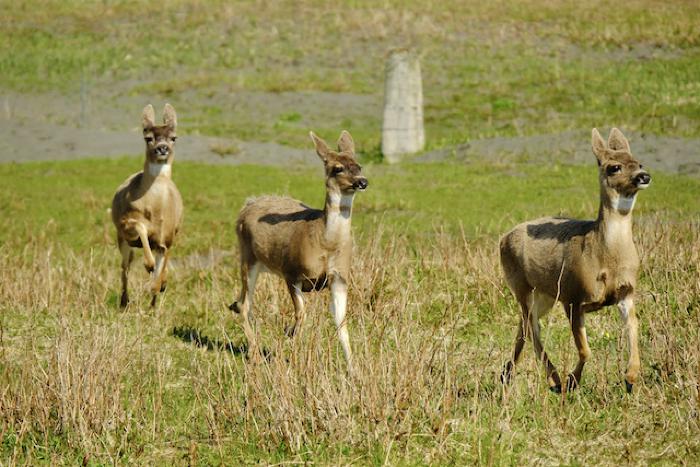Deer — Tuntuq

Sitka black-tailed deer (Odocoileus hemionus sitkensis) are a popular and important subsistence resource for Kodiak Islanders. Once found only in northern coastal British Columbia and southeast Alaska, the animal’s range now includes Yakutat Bay, Prince William Sound, and the Kodiak region. Sitka deer were first introduced to Kodiak in 1924, with the release of fourteen animals on Long Island. An additional nine deer were released on Kodiak Island in 1934. From these small herds, a large population grew and gradually spread throughout the archipelago.
Sitka deer are small and stocky with short faces. Adults range from 80 to 120 pounds in the fall. They eat leafy green shrub vegetation in summer and evergreen forbs, woody browse, and lichens in the winter.
On Kodiak, the deer-hunting season begins in August and runs into early winter. Hunting is most common in the fall, particularly in November and December. At this time of year, snow forces the animals out of the mountains into lower elevations. Deer can even be found on beaches, where people hunt them by boat.
Subsistence studies indicate that the deer are now Kodiak’s third most important wild food, after salmon and sea mammals, and the most important terrestrial resource. People harvest deer in all of Kodiak’s communities, although reliance on these animals is greatest in rural villages. Here, Alutiiq families harvest an average of three to five deer per year, obtaining several hundred pounds of meat.
Alutiiq people prepare deer meat into steaks, roasts, burgers, and stews, and deer antlers are gaining popularity as a raw material. Artists fashion deer antler into jewelry as well as handles for ulu knives and woven baskets.
